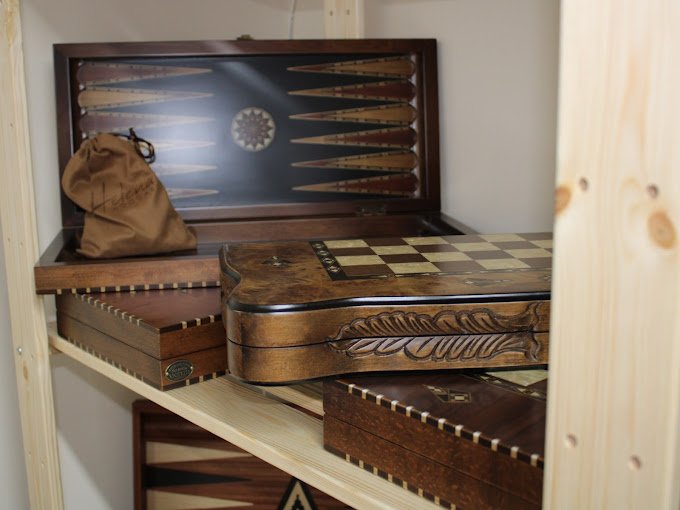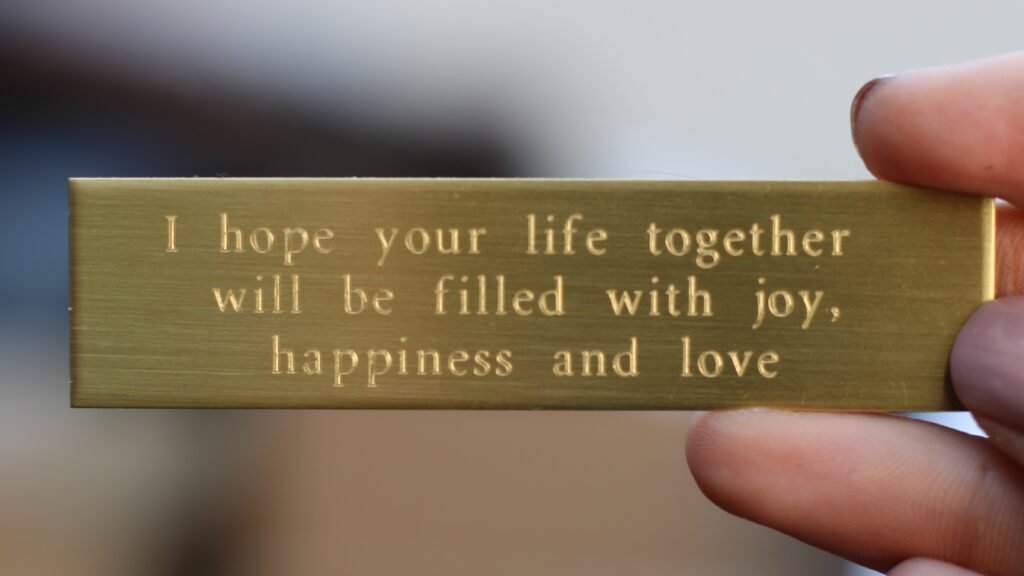
Backgammon Sets: What Makes a High-Quality Board?

When it comes to classic board games, few can boast the rich heritage and enduring appeal of backgammon. Dating back nearly 5,000 years to ancient Mesopotamia, this sophisticated game of strategy and chance has captivated players across countless generations and cultures. Today, enthusiasts and casual players alike often find themselves drawn to the allure of a premium backgammon set – but what exactly distinguishes an exceptional board from a mediocre one? This comprehensive exploration will delve into the nuanced world of backgammon craftsmanship, revealing the elements that truly matter when selecting a board worthy of this timeless game.
The Anatomy of a Backgammon Set
Before we examine quality markers, it’s essential to understand the fundamental components that constitute a proper backgammon set. The traditional board features a distinctive playing surface with 24 triangular points (or ‘pips’) arranged in four quadrants. Each player requires 15 checkers (sometimes called stones or men), typically in contrasting colours such as black and white or brown and cream. The set is completed by a pair of dice for each player, a doubling cube to track wagering stakes, and often a dice cup or shaker to ensure fair rolls. Some premium sets also include a carrying case that doubles as the playing board when unfolded.
The playing surface quality forms the foundation of any backgammon set’s overall calibre. This rectangular battlefield, traditionally divided into inner and outer boards by a central bar or ridge (often called the ‘bar’ or ‘bridge’), must be meticulously crafted to provide both aesthetic pleasure and functional excellence. The 24 triangular points must be precisely positioned and clearly distinguishable, allowing players to quickly assess the game state without confusion or eyestrain.
Materials Matter: The Foundation of Quality
The materials selected for a backgammon set significantly influence both its durability and aesthetic appeal. Traditional craftsmanship often favours solid hardwoods for the board’s frame and playing surface. Woods such as walnut, oak, maple, and mahogany are prized for their natural beauty, distinctive grain patterns, and exceptional durability. The finest boards often feature contrasting wood inlays to delineate the points – perhaps a rich ebony against a golden maple background, creating both functional clarity and visual splendour.
Beyond wood, contemporary sets sometimes incorporate alternative materials like genuine leather playing surfaces, which offer a luxurious tactile experience and pleasant acoustics when the pieces move across the board. For the checkers themselves, materials range from traditional bakelite (an early form of plastic known for its durability and pleasant weight) to more exotic options like onyx, mother-of-pearl, or even semi-precious stones in truly opulent sets.
Tournament-grade sets often feature precision-made acrylic checkers, valued for their perfect uniformity, weight consistency, and resistance to chipping or damage. The doubling cube and dice should ideally match or complement the checkers, maintaining a cohesive aesthetic throughout the set whilst ensuring functional excellence.
Craftsmanship: The Artisan’s Touch
Superior backgammon sets reveal their quality through meticulous craftsmanship. Expert artisans pay extraordinary attention to seemingly minor details that, collectively, elevate a board from merely functional to truly exceptional. The joints where wood pieces meet should display perfect alignment with seamless transitions. Points must be precisely measured and positioned, creating perfect symmetry across the playing field.
The inlay work – where contrasting materials are set into the board to create the distinctive triangular points – represents perhaps the most technically demanding aspect of backgammon craftsmanship. Premium boards feature inlays that sit perfectly flush with the surrounding surface, with clean, sharp edges defining each point. Lesser quality sets often reveal their shortcomings through uneven inlay work, with visible gaps, rough edges, or misaligned points.
The finishing process further distinguishes exceptional boards. Multiple layers of high-quality varnish or lacquer not only protect the wood but also enhance its natural beauty whilst providing a smooth, consistent playing surface. The finish should be neither too slick (causing pieces to slide unpredictably) nor too tacky (impeding smooth movement). Instead, it must strike the perfect balance that allows checkers to move with satisfying precision.
Playing Experience: Where Form Meets Function
While aesthetic considerations certainly matter, the ultimate test of a backgammon set’s quality lies in the playing experience it delivers. Superior boards balance visual appeal with functional excellence, creating an environment where the game itself takes centre stage. Several elements contribute to this ideal playing experience:
The weight and balance of the checkers should feel substantial without being cumbersome. Each piece should sit comfortably between the fingers and produce a satisfying sound when placed on the board – neither a hollow clack nor a deadened thud, but rather a rich, resonant note that signals quality. Consistency matters tremendously; all checkers should be identical in size, weight, and shape, ensuring fair play and eliminating any possibility of distinguishing pieces by touch alone.
The dice represent another crucial component affecting gameplay. Premium sets feature precision dice with sharp edges and corners, ensuring truly random results with each roll. The pips (dots) on the dice should be inlaid rather than printed, preventing wear that might eventually create imbalances. Some high-end sets include precision-machined dice with perfectly drilled pips, weighted to ensure statistically perfect randomness – a feature particularly valued in tournament play.
The doubling cube – that six-sided numerical tracker essential for competitive play – should be easily readable from any angle, with crisp numerals (2, 4, 8, 16, 32, and 64) that won’t fade with handling. In premium sets, this cube often receives the same careful attention as the checkers, featuring matching materials and complementary design elements.
Board Dimensions and Proportions
Not all backgammon boards are created equal when it comes to size. While casual players might be satisfied with travel-sized or novelty sets, serious enthusiasts understand that proper dimensions contribute significantly to both playing comfort and strategic clarity. Tournament-standard boards typically feature points measuring approximately 5 centimetres at their widest edge, providing sufficient space for multiple checkers without crowding.
The overall board dimensions must maintain classical proportions, with the length approximately 1.5 times the width when opened. This creates the optimal playing field where all points remain visible and accessible without unnecessary reaching or straining. The height of the board’s edges – the walls containing the playing field – should be sufficient to prevent dice from escaping during enthusiastic rolls without obstructing the player’s view of the playing surface.
For tournament play, the World Backgammon Association recommends specific dimensions: an inner playing surface measuring approximately 44-48 cm in length and 30-33 cm in width. Casual players may prefer slightly smaller boards for convenience, but extreme miniaturisation inevitably compromises the playing experience.
Acoustic Properties: The Unsung Element of Quality
Perhaps surprisingly, the acoustic profile of a backgammon set significantly influences the overall playing experience. Premium boards create a distinctive soundscape during play – one that connoisseurs recognise as the auditory signature of quality. The sound of checkers being placed on the board, the subtle friction as they’re moved across the playing surface, and the authoritative report of dice striking the board all contribute to this acoustic profile.
Wood selection plays a crucial role in determining these acoustic properties. Denser hardwoods typically produce richer, more resonant tones, while softer woods create more muted sounds. The thickness of the playing surface also influences acoustics; substantial boards with proper bracing tend to produce more pleasing sounds than thinner, less substantial alternatives.
This acoustic dimension might seem trivial to novices, but experienced players understand that these sensory elements enhance immersion and contribute to the ritualistic pleasure of the game. The satisfying click of a well-made checker against a properly constructed board forms part of backgammon’s tactile and auditory tradition.
Portability and Protection
Many premium backgammon sets are designed with portability in mind, featuring clever folding designs that protect the playing surface and components during transport. Traditional sets often employ a suitcase-style design, where the board folds in half along its central axis, creating a protective shell around the playing pieces stored within. The quality of this folding mechanism – including hinges, clasps, and alignment when closed – provides further evidence of overall craftsmanship.
Superior portable sets typically feature interior compartments custom-fitted to hold checkers, dice, and doubling cubes securely during transport. These compartments should prevent pieces from shifting or colliding, eliminating the risk of damage between gaming sessions. Some luxury sets include dedicated dice cups that nest perfectly within these compartments, maximising protection whilst minimising wasted space.
For the exterior, premium travel sets often feature leather or leatherette coverings that provide both protection and aesthetic appeal. Metal corners and reinforced edges offer additional durability for sets that will see frequent transport. Clasps and closures should operate smoothly whilst securing the board firmly in its closed position – another detail where quality becomes immediately apparent.
Aesthetic Considerations: Beyond Function
While functionality remains paramount, the aesthetic appeal of a backgammon set undeniably influences its perceived value and the pleasure it brings. Premium sets often feature thoughtful design elements that elevate them from mere gaming equipment to genuine objects of beauty. The juxtaposition of contrasting woods, the symmetry of the points, and the harmony between checkers and board all contribute to this visual appeal.
Some manufacturers incorporate decorative elements such as marquetry (inlaid wood designs), border inlays, or custom engraving to further distinguish their sets. However, the finest boards maintain a balance between ornamentation and functionality – decorative elements should enhance rather than distract from the playing experience.
Colour schemes typically adhere to traditional palettes – contrasting dark and light points to ensure clear visual distinction during play. However, within these functional constraints, artisans find ample room for creative expression through subtle variations in tone, grain patterns, and finishing techniques.
Evaluating Backgammon Set Quality
For potential purchasers seeking to evaluate backgammon set quality before investing, several assessment techniques prove valuable. Begin by examining the playing surface under good lighting, looking for perfect alignment of points, consistent colouration, and smooth transitions between materials. Run your fingers along the edges where inlays meet the background – quality sets will feel perfectly smooth, with no detectable ridges or gaps.
Test the checkers by stacking them in multiple columns across different points. They should create stable, even stacks without wobbling or leaning. Roll the dice repeatedly, observing how they move across the board and whether they produce truly random results. Open and close the case several times, noting the smoothness of the hinge mechanism and how precisely the two halves align when closed.
Finally, consider the overall weight of the set. Quality boards typically possess substantial heft, reflecting the density of premium materials and solid construction techniques. Exceptionally light boards often indicate hollow construction or the use of lightweight, less durable materials.
Investment Value and Longevity
Premium backgammon sets represent not merely a purchase but an investment in countless hours of future enjoyment. Quality boards often become family heirlooms, passed down through generations whilst maintaining both their functional excellence and aesthetic appeal. Unlike many contemporary gaming products designed for planned obsolescence, a properly crafted backgammon set can last decades or even centuries with appropriate care.
This longevity justifies the sometimes substantial price difference between premium and budget options. When amortised across years of use, the cost per gaming session becomes remarkably reasonable for even the most luxurious sets. Furthermore, truly exceptional backgammon boards often appreciate in value over time, particularly those created by renowned craftsmen or featuring rare materials.
Maintenance requirements remain minimal for quality sets. Occasional dusting, avoiding direct sunlight to prevent fading, and perhaps a rare application of appropriate wood polish or conditioner will maintain a premium board’s beauty indefinitely. Checkers and dice typically require no maintenance beyond keeping them complete and protected from loss.
Conclusion: The Worthwhile Investment
A high-quality backgammon set represents the perfect marriage of form and function – a playing field where craftsmanship enhances gameplay whilst creating an object of genuine beauty. The finest boards elevate the gaming experience through thoughtful material selection, meticulous construction, perfect proportions, and attention to seemingly minor details that collectively create excellence.
For serious players, the investment in a premium set pays dividends through enhanced playing pleasure, reliable performance, and the satisfaction of owning an object crafted to exacting standards. For casual enthusiasts, such a set often serves as the catalyst for deeper engagement with this ancient game, its quality inspiring more frequent play and appreciation of backgammon’s strategic depths.
Whether seeking a tournament-grade board for competitive play or a beautiful heirloom piece for casual family enjoyment, understanding these quality markers empowers consumers to make informed choices. In a world increasingly dominated by disposable entertainment, a properly crafted backgammon set stands as a testament to enduring value – both as a gaming implement and as an object of inherent worth. Like the game itself, which has survived millennia through constant reinvention and rediscovery, a quality backgammon board represents not merely a purchase but an investment in tradition, craftsmanship, and countless hours of future enjoyment.





